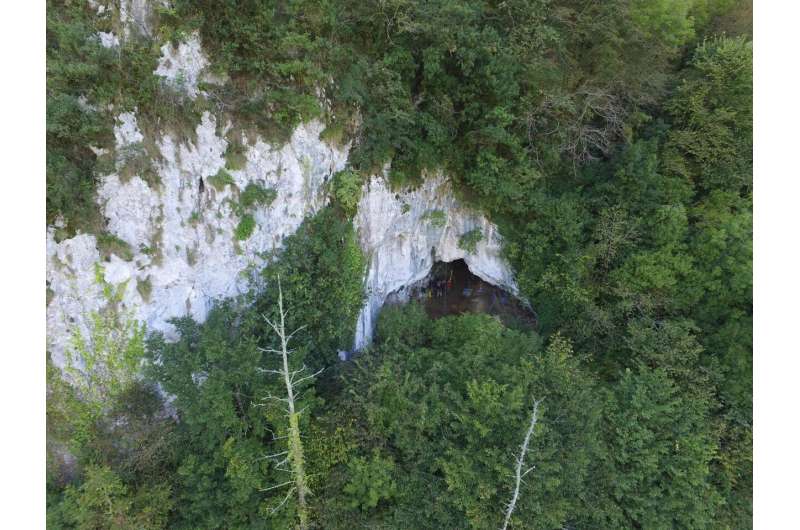Occupation of the last Neanderthal groups in the Cantabrian region

Scientists at the Centro Nacional de Investigación sobre la Evolución Humana (CENIEH) have participated in a study published today in the journal Scientific Reports on the settlement patterns of the last Neanderthal groups in the Cantabrian region at the Amalda I Cave (Gipuzkoa), which reveals the organization of the activities carried out there and alternation in its occupation by humans and carnivores.
Through analyses of the findings, such as those conducted at the Digital Mapping and 3-D Analysis Laboratory and the Prehistoric Technology and Archaeology Laboratory of the CENIEH, the researchers show that in the zone closest to the cave entrance, the Neanderthals performed processing work for medium-sized prey and knapping, activities which seem to have been carried out simultaneously.
On the other hand, as the lead author of the study, Laura Sánchez-Romero, of the Human Evolution Research Center (HERC) at the University of California in Berkeley (U.S.), explains, "Carnivores also inhabited the cave, but at moments after humans and in zones further in, where they accumulated smaller prey."
This alternation in the occupation of caves has been observed at other sites, but in the case of Amalda I, this is of particular interest because it has been possible to verify the precise moments of occupation of the site by Neanderthals and carnivores. Moreover, it has also been possible to delve into the type of structuring of both the space and the activities undertaken with evidence of a high degree of social and group organization.
This work, in which the Universidad de Cantabria also participated, is part of a project financed by the Diputación Foral de Gipuzkoa, which is coordinated by the CENIEH archaeologist Joseba Rios Garaizar. Its objective is to assess the Neanderthal occupations in the eastern part of the Cantabrian region, investigating the chronology, the patterns of mobility and occupation in the territory, and the forms of economic organization employed by these groups.
More information: New insights for understanding spatial patterning and formation processes of the Neanderthal occupation in the Amalda I cave (Gipuzkoa, Spain). Scientific Reports, doi: doi.org/10.1038/s41598-020-65364-8
Journal information: Scientific Reports
Provided by CENIEH





















